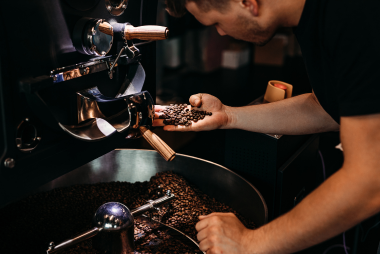


From the bold intensity of Italian espresso to the smooth, milder brews preferred in Northern Europe, coffee varies widely across cultures. Whether enjoyed as a leisurely morning indulgence or grabbed as a quick caffeine fix on the go, coffee is a global staple, deeply embedded in daily life.
Behind this universally loved beverage lies a remarkable evolutionary journey that spans hundreds of thousands of years. Before coffee became a household essential, its story was shaped by nature, adaptation, and human cultivation.
Central to this story is Coffea arabica, the species responsible for approximately 60% of the world's coffee production.

This unique plant originated from a natural hybridization, where two species cross and combine their genetic material to form a new organism. In this case, Coffee arabica emerged from the hybridization of two diploid (with two sets of chromosomes) coffee species: Coffea canephora (commonly known as Robusta) and Coffea eugenioides. While both parent plants have two set of chromosomes, Coffea arabica has four sets, a condition known as allotetraploidy.
Coffea arabica retains all four sets of chromosomes from its parent plants, rather than combining and reducing these sets as is typical in reproduction. This retention of extra chromosome sets serves as a significant evolutionary force, influencing genome evolution in various complex organisms; it may also provide adaptive advantages during periods of global change. In the case of Coffea arabica, this genetic trait allows it to integrate characteristics from both parent species: enhancing its unique flavour and aromatic complexity.
The emergence of Coffea arabica is believed to have occurred between 610,000 and 350,000 years ago. Over time, this species has undergone several genetic bottlenecks, meaning its population size drastically declined at certain points which lead to significant losses of genetic diversity. When only a small number of plants survive, the genetic variation within the species becomes more limited, making it harder to adapt to environmental changes.
A key split between wild populations and the ancestors of cultivated varieties happened approximately 30,500 years ago, further shaping the genetic landscape of Coffee arabica.
The domestication of Coffea arabica began in the 15th or 16th century in Yemen and gradually spread to different regions. Around 1600, coffee plants were introduced to India. In the 17th century, Dutch traders transported the plant to Southeast Asia, giving rise to what is now known as the Typica lineage.
In the 18th century, coffee plants from Yemen were introduced to Réunion Island, a French overseas territory in the India ocean, historically known as Île Bourbon. It was here that the distinct coffee variety know as Bourbon was developed. Today, nearly all cultivated Arabica coffee varieties originate from these Typica and Bourbon lineages, with only a few wild strains still found in Ethiopia.
A significant breakthrough came in 1927 when a natural hybrid between Coffea arabica and Coffea canephora was discovered on Timor Island. This hybrid shows resistance to coffee leaf rust, a devastating fungal disease that affects coffee plants. As a result, many modern Arabica varieties now contain genes from Coffea canephora, thereby improving their resilience to leaf rust. However, this genetic modification also affects cup quality, as Robusta genes can influence the delicate flavour profile of Arabica coffee.
To ensure the survival of high-quality Arabica coffee, scientists have sequenced its genome to better understand its genetic composition. By analysing 41 wild and cultivated strains, researchers have mapped the evolution and migration patterns of Coffea arabica.
Identifying key genetic regions responsible for disease resistance is essential to breeding new varieties that can withstand climate change and pests, while crucially maintaining Arabica's signature taste. Advances in genomics may pave the way for more resilient and sustainable coffee crops, securing the future of one of the world's most beloved beverages.

The next time you take a sip of coffee, remember that what you taste is the result of centuries of adaptation, cultivation, and scientific discovery.
Source: Salojärvi, J., Rambani, A., Yu, Z. et al. The genome and population genomics of allopolyploid Coffea arabica reveal the diversification history of modern coffee cultivars. Nat Genet 56, 721–731 (2024). https://doi.org/10.1038/s41588-024-01695-w